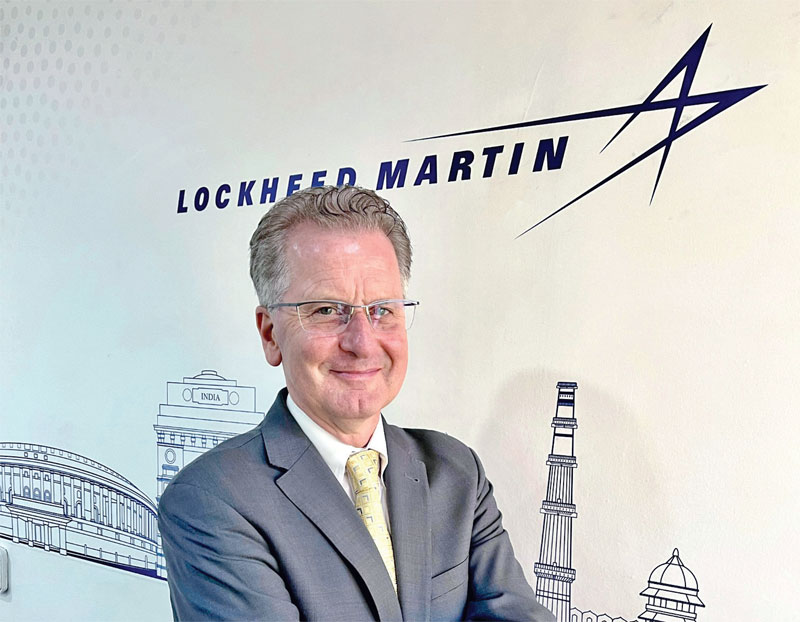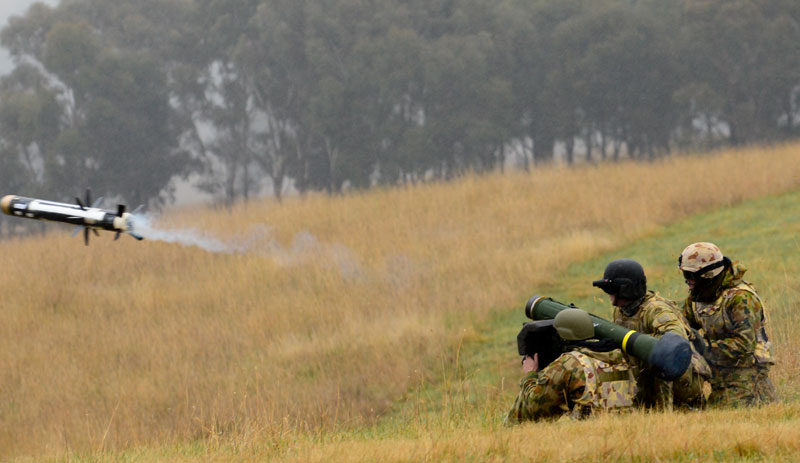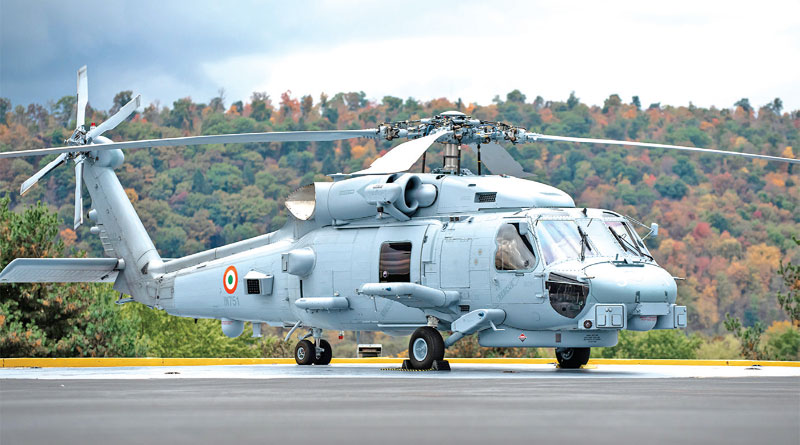Our F-21 Offer is Also ‘Made in India’ Which Addresses the goals of ‘Aatmanirbhar Bharat’ While Providing India With an Improved Security Cooperation Relationship With the United States

From Lockheed Martin’s perspective, how is Aero India 2023 different from its previous editions in terms of your exhibits and participation?
We are really excited to participate in Aero India 2023 and reiterate our commitment to supporting the growth of an indigenous defence manufacturing ecosystem, advancing the aerospace and start-up ecosystem, and strengthening India’s strategic security and industrial capabilities. We see tremendous opportunity in India’s defence industry—both private and public. Aligned with our commitment to Aatmanirbhar Bharat and Make in India initiatives, we look forward to further strengthening our partnerships across the country with companies of all sizes, including MSMEs.
Our focus at the show will be to exhibit our advanced security platforms and capabilities from across Lockheed Martin. Aero India 2023 provides us with an opportunity to spotlight some of our platforms and programmes for the country including:
- F-21 fighter aircraft cockpit demonstrator
- C-130J Super Hercules transport aircraft
- MH-60R multi-mission helicopter
- S-92 helicopter
- S-76 helicopter
- CH-53K heavy-lift helicopter
- Javelin Weapon System
Did the Pandemic effect your ongoing programmes in India? What has been the progress on those?
COVID-19 had no impact on our India programmes except for the general inability to meet face-to-face with our various program stakeholders. We utilised virtual meetings in lieu of in person ones.
Over the course of the last two years, we have delivered six MH-60R helicopters to the Indian Navy, three of which are being utilised to train Indian pilots and crew members. In July-August 2022, the Indian Navy accepted the delivery of another three helicopters at Kochi International Airport and they will be initially based at Naval Air Station INS Garuda in Kochi. A total of 24 MH-60Rs will be delivered in country over the next few years.
Our TLMAL joint-venture programme in Hyderabad is the sole supplier for the C-130J empennage. TLMAL delivered on all of its commitments to the C-130J team throughout the COVID pandemic. Our TLMAL team worked hard to establish protocols and work patterns to support public health guidelines and to protect its team, while keeping delivery commitments as the core of its united work efforts. We are very proud of the TLMAL team for these accomplishments and the team’s ongoing commitments to the C-130J programme.

What is the update on the MH-60R helicopters that are being procured by the Indian Navy? Will LM participate in navy’s other helicopter programmes too?
The Indian Navy’s acquisition of MH-60R ‘Romeo’ helicopter is the largest contract Lockheed Martin has ever signed with India. Through the MH-60R programme, Lockheed Martin is excited to work with Indian companies to further develop long-term potential business relationships.
The MH-60R ‘Romeo’ is the most capable and mature Anti-Submarine (ASW)/ Anti-Surface Warfare (ASuW) multi-mission helicopter available in the world today. Lockheed Martin has a proven delivery record with 100 per cent on time delivery of over 330 MH-60Rs to the US and six international navies including the Indian Navy. The MH-60R combines the world’s most reliable and cost-effective naval helicopter with the most advanced and integrated ASW/ ASuW mission system and sensors. The aircraft has the lowest operating and sustainment costs of any maritime helicopter with the most advanced capabilities required for the Indian Navy to meet all of their complex missions.
We would be happy to engage with the Indian Navy on their future acquisition programmes, should there be an opportunity to do so.
Lockheed Martin has earlier expressed its intention of supporting India’s Advanced Medium Combat Aircraft (AMCA) as well the Tejas Mk II. What is the update on this?
Lockheed Martin has provided robust technical assistance with key allies across the globe with a demonstrated track record of success. Should the government of India inquire about AMCA via an Expression of Interest or other means to Lockheed Martin, we would look forward to responding. Certainly, the specifics of the technology assistance would need to be approved with the US government.
LM recently concluded annual Indian suppliers conference in Bengaluru. What did LM achieve from this?
The annual Lockheed Martin India Suppliers Conference 2022 reiterated our resolve to develop the capabilities of suppliers and to give them access to the global supply chain to manufacture in India, from India, for India and for the world. After the conclusion of the conference, Lockheed Martin supply chain teams visited more than 25 suppliers across India to assess their capabilities and establish alliances.
The two-day event saw more than 60 Indian companies of all sizes—large, MSMEs and start-ups participating in the conference and receiving the opportunity to showcase their capabilities to all four business areas of Lockheed Martin and international partners. More than 250 delegates attended the event and over 100 business to business meetings were organized to explore partnership opportunities.
Hindustan Aeronautics Limited (HAL) was recognised as an Outstanding Supplier by Lockheed Martin Rotary and Mission Systems (RMS) and India Multi-Role Helicopter (MRH) team for outstanding support, dedication, and commitment to the success of the India MRH Program. HAL demonstrated outstanding customer focus through delivery of the first two indigenous Identify Friend or Foe Transponder units and became the first Indian supplier to provide Buyer Nominated Equipment for integration on the India MRH platform.
Another Indian manufacturer, SASMOS HET Technologies was recognised as an outstanding supplier by the Lockheed Martin RMS and Missiles and Fire Control Global Supply Chain Organisations and the programme teams for their commitment to the success of the Aegis Low Noise Amplifier (LNA) and Hellfire programmes. During the past two years, while working smartly and safely through the pandemic, SASMOS delivered over 18,000 assemblies, demonstrating an outstanding customer focused approach while meeting or exceeding requirements.
What is the update on MRFA? What kind of engagement do you have with the stakeholders in India?
The Indian Air Force (IAF) currently faces a fighter squadron deficit required to meet its regional security needs. Lockheed Martin has proposed the F-21 as the ideal solution to meet India’s capability, force structure, affordability, Make in India and Skill India requirements. The F-21 would serve as a force multiplier for the IAF with an unmatched capability-to-cost ratio compared to the competition.
We have been investing in building capability in-country in advance of the fighter jet competition and as a show of confidence in Indian industry signed MoUs with Hindustan Aeronautics Limited (HAL) and Bharat Electronics Limited (BEL) to explore industrial opportunities to generate jobs and economic benefits in support of ‘Make in India and Start-Up India’ initiatives, as well as in support of India’s air power mission.
Lockheed Martin formally recognised our joint venture, Tata Lockheed Martin Aerostructures Limited (TLMAL) as a potential future co-producer of fighter wings in December 2021. The in-country manufacturing of one of the most technologically complex aerostructures—a fuel-carrying 9G, 12,000 hour, interchangeable/ replaceable fighter wing demonstrates Lockheed Martin’s degree of confidence in our relationships with our partners in India.
The aircraft is equipped with state-of-the-art systems and sensors that would allow the Indian Air Force to detect, track and engage multiple targets in a contested environment. The aircraft features numerous India-specific capabilities—inside and out—uniquely configured to meet the IAF’s requirements. Production of the F-21 in India will create tens of thousands of new highly skilled jobs within the Indian industrial base. This large development programme represents an opportunity to support a USD165 billion global sustainment market and includes a robust production plan.
The platform is configured with the latest sensors and mission avionic systems that couple onboard and off-board data information into an effective, easy to manage combat situation display. Years of pilot-vehicle interface design—that Lockheed Martin developed for the data-intensive 5th generation F-35 and F-22 platforms—will be incorporated into the F-21. Lockheed Martin has a long history of leveraging capabilities across platforms, and we have an extremely high level of confidence in the maturity and performance of these 5th generation capabilities when integrated onto the F-21.
The F-21 has a 30 per cent lower lifecycle cost and carbon footprint almost entirely because it is a lighter weight, single-engine aircraft that doesn’t burn as much fuel compared to other twin-engine competitors/ platforms. Furthermore, the F-21 offering includes sourcing advanced systems and components from across India via our unrivalled track record of developing robust industrial ecosystems across the globe.
The current and future state of warfare is and will be around gathering and sharing information across multiple domains—air, space, land, sea, and cyber to make effective warfighting decisions as quickly as possible. The F-21 will be able to integrate across these domains and across Indian services to provide current and future relevance. Our F-21 offer is also ‘Made in India’ which addresses the goals of ‘Aatmanirbhar Bharat’ while providing India with an improved security cooperation relationship with the United States.
Could you talk about your various partnerships in India and how LM visualises supporting Prime Minister Modi’s ‘Aatmanirbhar Bharat’ vision?
Lockheed Martin continues to build upon its more than three-decades of partnership with India, expand collaborations with local industry to support the evolution of an indigenous defence manufacturing ecosystem, and further advance India’s strategic security and industrial capabilities.
Our joint venture with Tata Advanced Systems Limited, Tata Lockheed Martin Aerostructures Limited (TLMAL) was established in Hyderabad over a decade ago. The facility produces major aerostructure components for the C-130J Super Hercules transport aircraft. TLMAL is the sole supplier of these components to Lockheed Martin and is an integral part of our global supply chain. To date, TLMAL has manufactured and delivered more than 180 C-130J empennages.
Our other joint venture, Tata Sikorsky Aerospace Limited (TSAL) manufactures aerospace components for commercial helicopters and aircrafts and has expanded to include aircraft engine components for aerospace industry companies as well. As of now, TSAL has delivered 157 S-92 cabins to date.
More than 500 suppliers including over 140 Micro, Small & Medium Enterprises (MSMEs) feed into these two joint ventures and have benefited from the vision of Lockheed Martin and Tata working together.
More than USD600 million worth of exports have been generated by these JVs and produced over USD200 million in Indian industry revenues. Lockheed Martin has invested over USD100 million in manufacturing equipment, tooling, IP at these JVs.
At present, more than 70 Indian suppliers have been integrated into Lockheed Martin’s global supply chain.
As a part of its larger commitment to enhance the growth and development of India’s innovation and start-up ecosystem, Lockheed Martin has sponsored and supported the India Innovation Growth Program (IIGP) since 2007. IIGP has supported more than 400 innovators and start-ups with in-depth technology commercialization training and handholding support to commercialize and scale their ventures in India and across the world. The programme has generated approximately USD1 billion in revenue for Indian start-ups and entrepreneurs.

What innovation is happening at Lockheed Martin in terms of automation, intelligent equipment/ platforms and man-machine interface?
Lockheed Martin’s uncrewed technologies can play a predominant role in modern-day warfare situations. Our portfolio of sophisticated uncrewed systems is currently being used for a variety of lifesaving military and commercial applications, and the demand for these capabilities is growing.
In addition, advancements that support autonomous and optionally-piloted operations, like Sikorsky’s MATRIX™ Technology, will change the ways aviators and air crews execute their missions, assisting when flying with reduced crew or limited visibility. MATRIX is like a virtual second pilot that will help operators fly safely and confidently in dangerous and complex missions. It can leverage full authority flight control inputs for autonomous flight—including take-off, route planning, obstacle avoidance, site selection and landing. MATRIX Technology will enable operators to fly more manned missions in adverse weather or restricted visibility, fly missions more effectively in complex and obstacle rich environments, eliminate sources of pilot and operator error, and reduce operating costs.
The technology has been integrated and extensively flight tested on various aircraft including the S-76B and a Black Hawk. During 2022, Sikorsky, a Lockheed Martin company, in partnership with the Defense Advanced Research Projects Agency (DARPA), successfully demonstrated Sikorsky’s MATRIX™ technology autonomy system, which forms the core of DARPA’s ALIAS (Aircrew Labor In-cockpit Automation System) project.
During demonstrations in 2022, pilots landed the aircraft, then flipped a switch in the cockpit to give control to the flight computer. With no humans on board, the fully autonomous aircraft avoided imagined buildings while route re-planning in real time, and delivered internal and external cargo loads over long distances at 100 knots speed. The team also showed how a ground operator with a secure radio and tablet can take control of the uncrewed helicopter, command it to release its sling load, and then land to evacuate a casualty.

